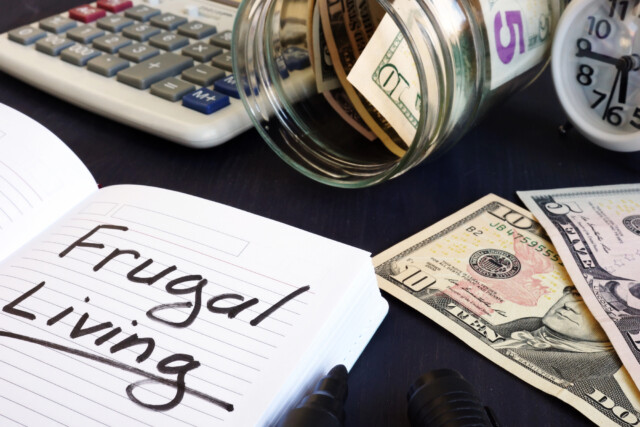Wealthtender is a trusted, independent financial directory and educational resource governed by our strict Editorial Policy, Integrity Standards, and Terms of Use. While we receive compensation from featured professionals (a natural conflict of interest), we always operate with integrity and transparency to earn your trust. Wealthtender is not a client of these providers. ➡️ Find a Local Advisor | 🎯 Find a Specialist Advisor

Inflation keeps ticking higher and higher, but affects the cost of some items much more than others
The US Bureau of Labor Statistics (BLS) tracks thousands of prices and folds them all into a weighted average they call the consumer price index, or CPI.
Last month, I wrote how the CPI’s year-over-year increase was 5.0%, which followed a string of gradually growing 12-month readings, from 1.4% in January, to 1.7% in February, to 2.6% in March, to 4.2% in April, to 5.0% in May. (Link to article)
Now, the BLS reports June’s year-over-year number is an even higher 5.4%, with a monthly increase of 0.9% (not seasonally adjusted).
Do All Prices Move Up Together?
They don’t.
Not at all.
You can see the BLS table here.
Some categories went up only a little bit – e.g., rent increased by just 1.9% (with overall shelter costs up 2.6%), medical care services 1.0%, recreation services 1.9%, education and communication services 2.4%, food 2.4%, alcoholic beverages 1.9%, etc.
Some even went down – e.g., medical care commodities dropped by 6.3%, and education and communication commodities slipped by 1.2%.
However, many other categories saw prices increasing faster than the overall inflation rate, some by double digits, and some by over 87%!
What’s Likely to Hurt Your Wallet Most?
Depending on what you tend to buy, whether routinely or in the next few months, here are the categories that could make you wish for last year’s prices.
Used Cars and Trucks
While new cars and trucks ticked up a healthy 5.3%, the worldwide shortage in chips made those harder to find. As a result, consumers turned to the used vehicle market, pushing prices there up by an astounding 45.2%. As a result, many of those 2-3 year-old vehicles now sell for about 95% of what they cost when they were new!
Car and Truck Rentals
The Covid-19 pandemic gutted the travel industry. One of the worst-hit were auto rental companies. With few people traveling, and many of those using their own vehicles to go on road trips, demand for rental cars and trucks plummeted.
To survive, these companies sold off massive chunks of their fleets, and delayed buying new vehicles.
Now that the economy is emerging from the pandemic’s effects, and leisure travel is rebounding nicely due to people’s pent-up urge to vacation away from home, demand for rental vehicles has shot up. Unfortunately, the above-mentioned chip shortage made new cars and trucks hard to come by, so rental fleets can’t be quickly scaled back up.
Economy 101 – when demand shoots up and supply can’t keep up, what do prices do? They soar, until those the increased cost restrains demand to the point that it can be met by existing supply.
In this case, prices shot up an eye-popping 87.7% (year-over-year from June 2020 to June 2021)!
Airfares, Public Transportation, and Other Intercity Transportation
With more people vaccinated and willing to sit on an airplane with 100+ strangers for hours and hours, airlines were able to increase their prices 24.6%, in many cases to above pre-covid prices.
Similarly, public transportation fares jumped 17.3%, and other intercity transportation 13.3%. Overall, transportation services are up double digits at 10.4%.
Fuel
The most common auto fuel, regular unleaded, jumped by 46.4% relative to June 2020.
Other grades also went up, though not quite as far. Midgrade unleaded is 40.1% more expensive now, while premium unleaded increased by a smaller yet still very high 36.8%.
Fuel oil went up by a similar 44.5%, so if that’s what heats your home, you’re probably praying for a mild winter (and likely for increased supply to reduce prices before the next cold snap).
Propane, kerosene, and firewood also went up, by a smaller yet still hefty 17.7%. Overall, the cost of energy commodities is up 44.2%.
Energy Services
Energy services, i.e., delivery of energy to your home, went up 6.3%. This is an average between electricity services that increase only 3.8% vs. utility (piped) gas services that increased by 15.6%.
Lodging Away from Home
The same urge to go on vacation is helping the hospitality industry. Prices for hotel/motel rooms and other lodging away from home are up 16.9%.
Homes
The BLS doesn’t directly track the real estate market, explaining that buying homes is a capital expenditure rather than consumption:
“Housing units are not in the CPI market basket. Like most other economic series, the CPI views housing units as capital (or investment) goods and not as consumption items. Spending to purchase and improve houses and other housing units is investment and not consumption. Shelter, the service the housing units provide, is the relevant consumption item for the CPI. The cost of shelter for renter-occupied housing is rent. For an owner-occupied unit, the cost of shelter is the implicit rent that owner occupants would have to pay if they were renting their homes.”
This “owner’s equivalent rent of primary residence” is up by just 2.3%.
I’m no economist, and I can’t argue they’re wrong.
However, if you’re in the market for a home, you’re probably seeing prices up by 20% or more compared to last year, depending on where you are and what sort of home you’re looking for. They may not call it consumption, but it certainly hurts your wallet!
What You Can Do About It (and the Limits of That)
Paying these higher prices is unavoidable in many cases. For example, cutting your home heating and cooling bills is doable to an extent, but even limited saving isn’t easy.
If you need to buy a home, you might feel tempted to hold off until the current seller’s market madness dissipates. Unfortunately, there’s no assurance prices will drop back down. They may simply stabilize at even higher levels than today’s.
When I bought my first home, I paid double what the seller had paid a couple of years earlier, and he paid double what the previous owner paid a few years prior to that. Then, 5 years later, I sold it for double what I paid. All told, housing in that town went up 8-fold in about 10 years.
When the 2008 market crash came, prices slumped by about 20%, but recovered within a few years after that, and are currently 20% higher than pre-crash.
You have more options when it comes to travel and vacations.
You can visit less expensive destinations, preferably ones you can easily reach by car. While gas is up much more than airfares, if it went up from $100 to $146, that’s still just $46 more for potentially a family to get where you’re going.
This is negligible compared to say paying $1500 instead of $1200 for several air tickets. You’d also be saving yourself the grief of paying nearly double for a rental car.
You can also cut your stay a bit shorter to reduce lodging costs, though if you can afford the extra say $100 for a week’s stay at a hotel rather than cutting your vacation a day shorter, after being shut in at home for 15 months due to the pandemic, I’d count that as a win.
Finally, if you’re in the market for a car, I’ve always said that buying new makes more sense than buying used. Back in March, I used data to prove that this is true for buying a car even at 1, 2, 3, 4, or 5 years old. Now, with used car prices up more than 45%, buying new makes more sense than ever, assuming you can find in stock a car that’s close enough to what you’re looking for.
The Bottom Line
Inflation is higher than it’s been in decades, and it seems to just keep going up. The Fed insists (hopes?) this is a temporary situation, and that prices will go back to the much more sedate inflation we’ve experienced for 20+ years.
Even if it is, nobody expects prices to drop back down. In fact, they may continue to soar for months or even a year or more.
This is really bad news for most consumers, especially those on fixed income, and most especially those whose income doesn’t benefit from any cost of living adjustments (COLAs).
If you are paying (or shopping) for any of the following, you’re probably feeling the pinch even more:
- Used cars
- Rental vehicles
- Airfare, public transportation, and other intercity transportation
- Gas
- Fuel oil, propane, kerosene, and firewood
- Energy services (i.e., delivery of energy)
- Hotel rooms
- A home
Prices for these have gone up faster than most categories, anywhere from high single digits to nearly double since last June.
All in all, paying attention to prices will let you pick and choose where you can and should economize, what purchases you may want to delay, and which ones you may decide to hurry up with, before prices shoot up even higher.
Are you ready to enjoy life more with less money stress?
Sign up to receive weekly insights from Wealthtender with useful money tips and fresh ideas to help you achieve your financial goals.

About the Author
Opher Ganel
My career has had many unpredictable twists and turns. A MSc in theoretical physics, PhD in experimental high-energy physics, postdoc in particle detector R&D, research position in experimental cosmic-ray physics (including a couple of visits to Antarctica), a brief stint at a small engineering services company supporting NASA, followed by starting my own small consulting practice supporting NASA projects and programs. Along the way, I started other micro businesses and helped my wife start and grow her own Marriage and Family Therapy practice. Now, I use all these experiences to also offer financial strategy services to help independent professionals achieve their personal and business finance goals.
Connect with me on my own site: OpherGanel.com and/or follow my Medium publication: medium.com/financial-strategy/.
Wealthtender is a trusted, independent financial directory and educational resource governed by our strict Editorial Policy, Integrity Standards, and Terms of Use. While we receive compensation from featured professionals (a natural conflict of interest), we always operate with integrity and transparency to earn your trust. Wealthtender is not a client of these providers. ➡️ Find a Local Advisor | 🎯 Find a Specialist Advisor








